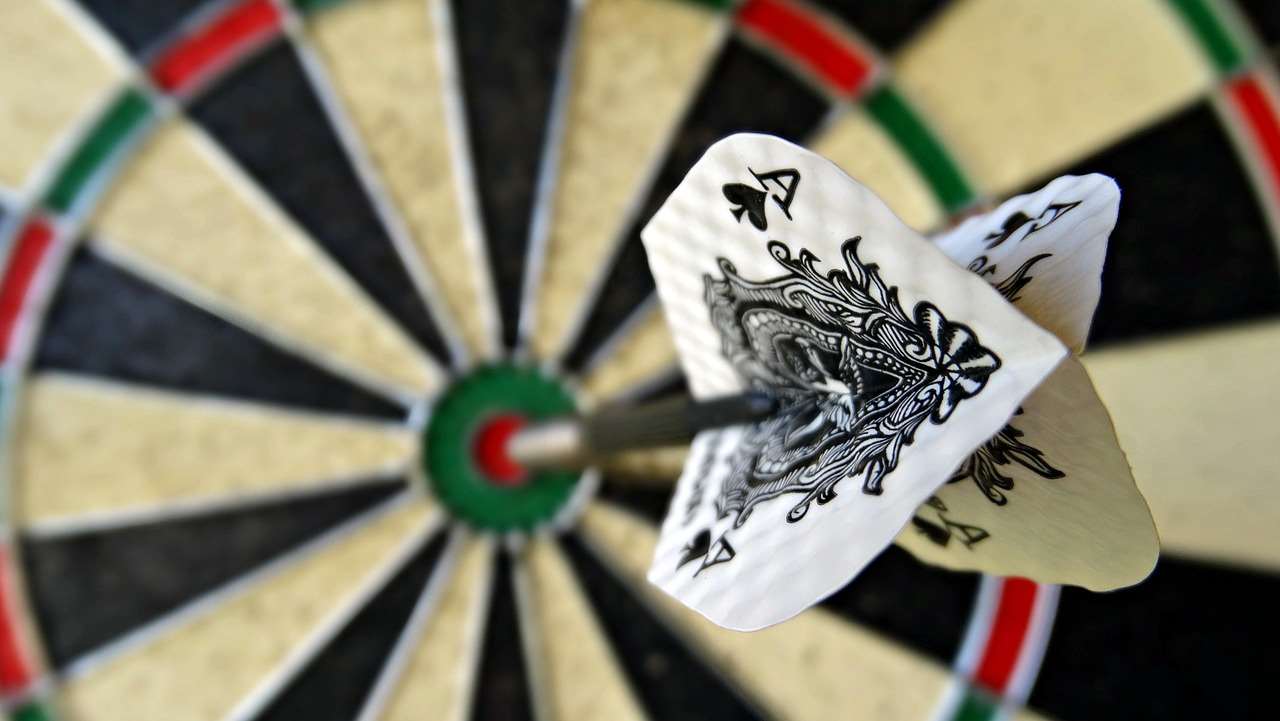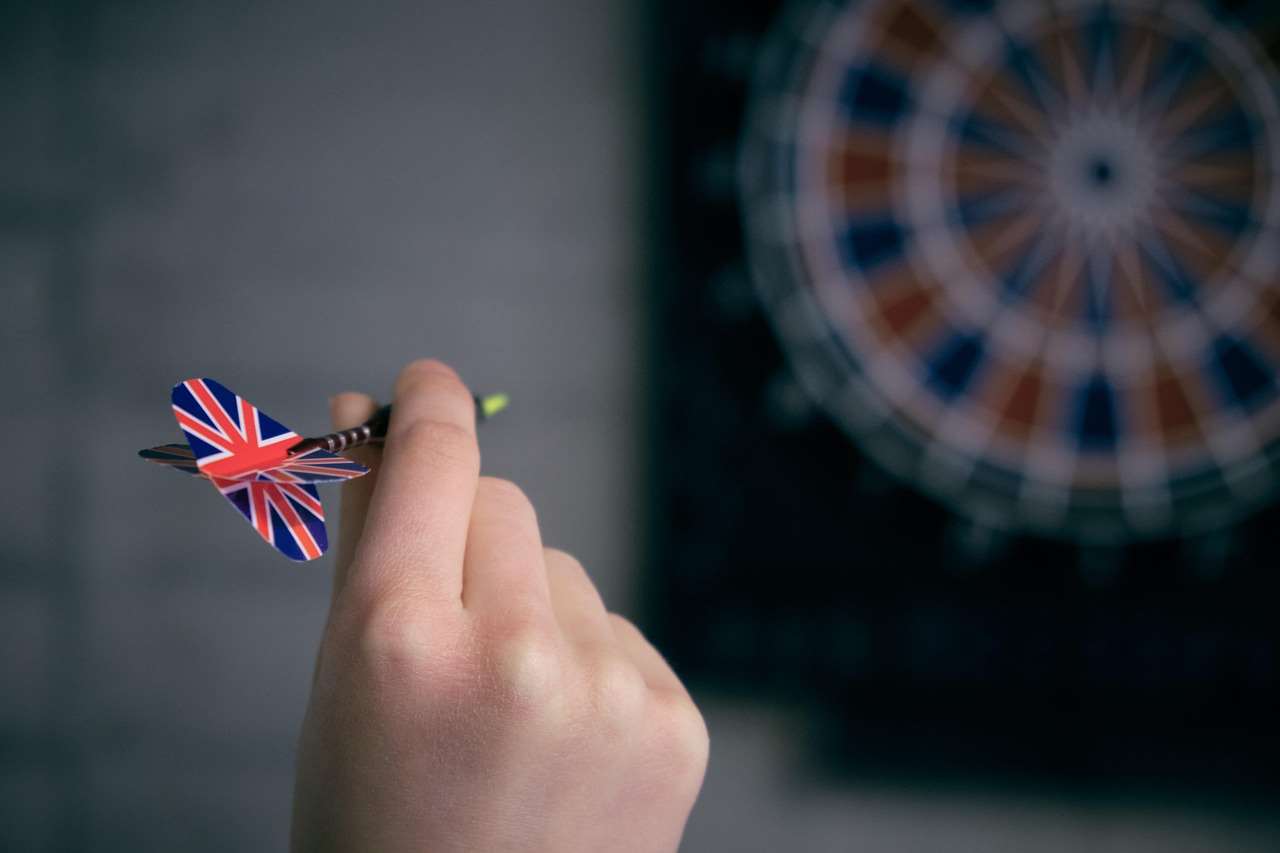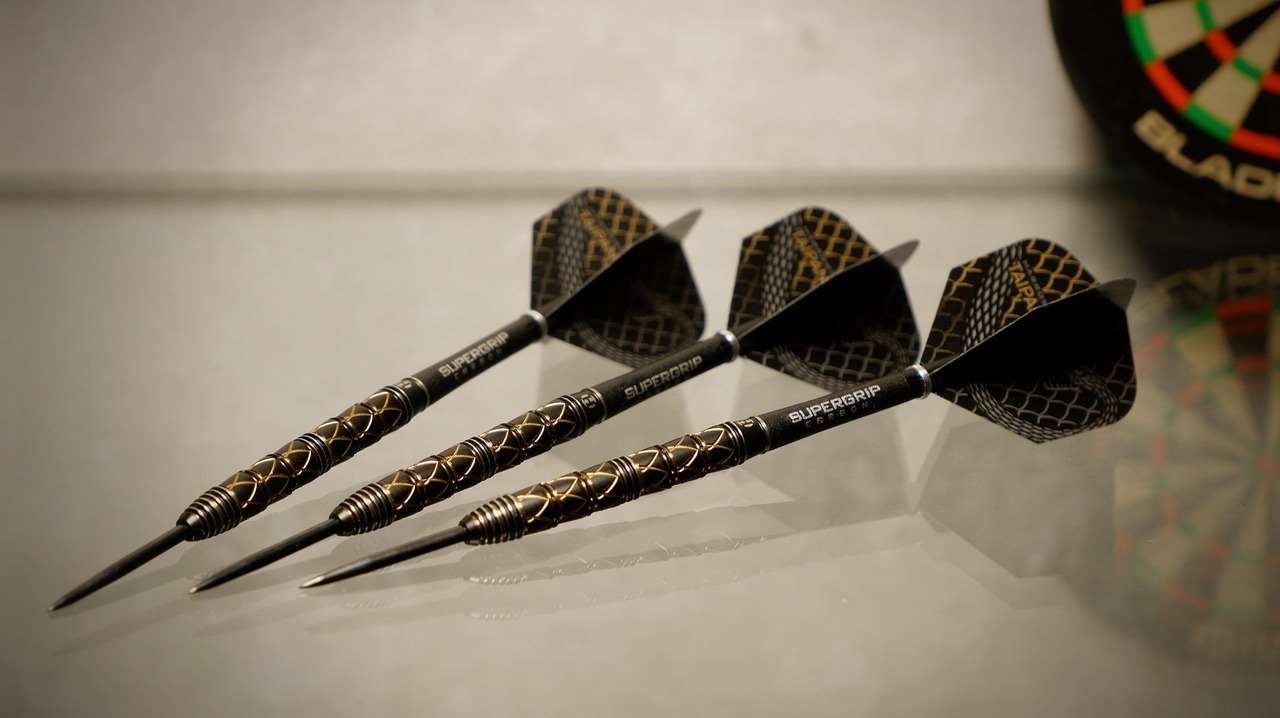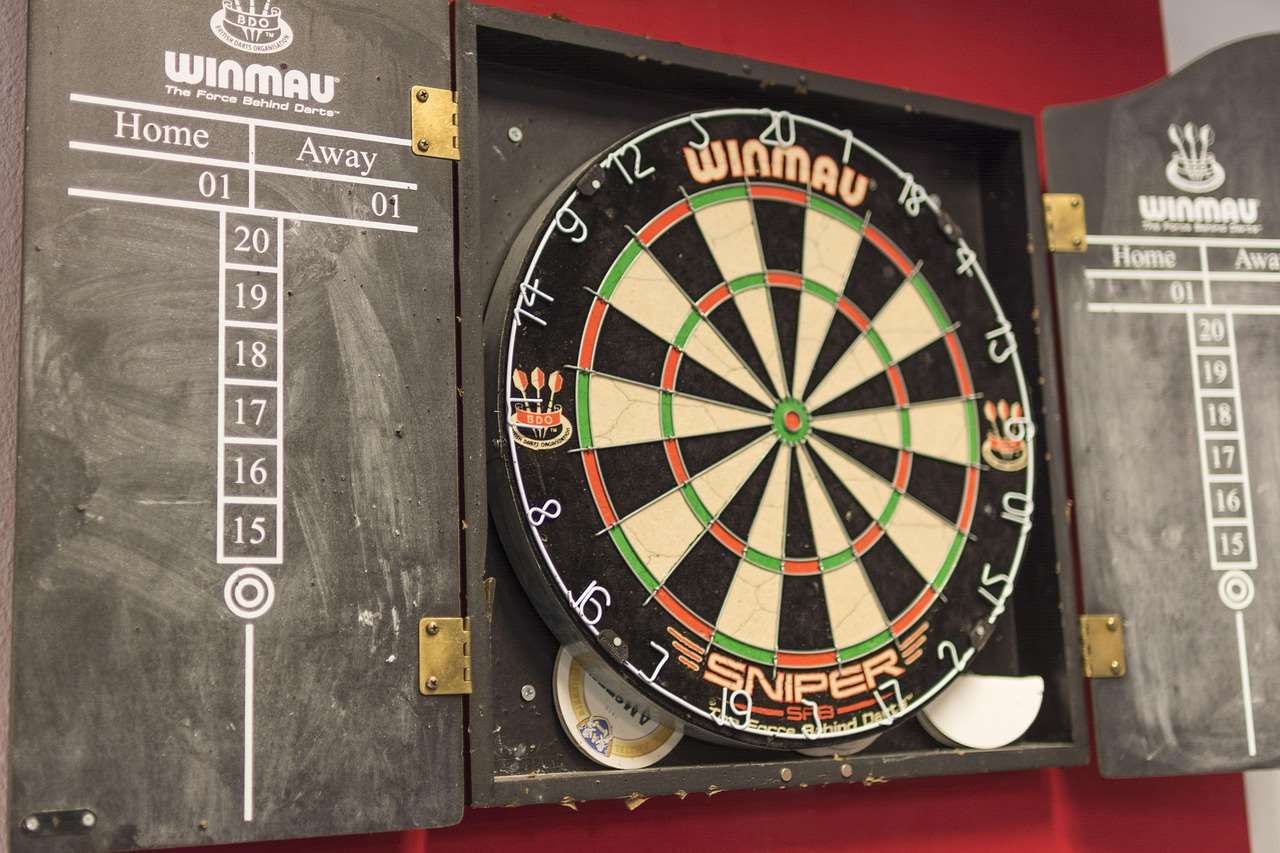Ready to **organize darts league fun format**? This guide unlocks creative formats beyond standard 501, injecting excitement and camaraderie into your league. Learn how to structure unique competitions, handicapping systems, and engaging social events for an unforgettable darts experience.
⚠️ Still Using Pen & Paper (or a Chalkboard)?! ⚠️
Step into the future! The Dart Counter App handles all the scoring, suggests checkouts, and tracks your stats automatically. It's easier than you think!
Try the Smart Dart Counter App FREE!Ready for an upgrade? Click above!
Spice Up Your Darts League: Fun Formats Beyond 501
While classic 501 is a darts staple, sticking to it exclusively can lead to stagnation. To truly **organize darts league fun format**, you need to introduce variety. This not only keeps players engaged but also caters to different skill levels and preferences. Think outside the box and consider alternative game types, handicapping systems, and even themed nights to create a dynamic and enjoyable league atmosphere.

Why Variety Matters
- Increased Engagement: Novelty breeds excitement. Introducing new formats prevents boredom and keeps players looking forward to each week.
- Caters to All Skill Levels: Some formats favor accuracy, while others reward risk-taking. This ensures everyone has a chance to shine.
- Boosts Social Interaction: Team-based formats and social events foster camaraderie and build stronger bonds between league members.
- Develops New Skills: Playing different games encourages players to adapt their strategies and improve different aspects of their game.
Creative Darts Game Formats
Let’s dive into some alternative dart games that can breathe new life into your league:
Around the Clock
Players must hit each number on the dartboard in sequence, starting with 1 and ending with 20. The first player to complete the circuit wins. A variation is to require hitting each number twice before moving on. This game emphasizes accuracy and consistency.
Cricket
A strategic game where players aim to close out numbers (20, 19, 18, 17, 16, 15, and the bullseye) by hitting them three times. Once a number is closed, only the player who closed it can score on that number. The first player to close all numbers and have a higher or equal score wins. Consider exploring rare dart game instructions for variations of Cricket.
Killer
Each player chooses a number on the dartboard. They must hit their number three times to become a “Killer.” Once a player is a Killer, they can knock out other players by hitting their numbers three times. The last player standing wins. This is a highly competitive and strategic game that fosters a fun rivalry.
Shanghai
Players take turns throwing at each number on the board, starting with 1 and progressing to 20. The goal is to score as many points as possible on each number. Hitting a single scores one point, a double scores two, and a triple scores three. A “Shanghai” is achieved by hitting a single, double, and triple of the same number in one turn, instantly winning the game. This game emphasizes both accuracy and luck.

Halve-It
In “Halve-It,” players select a set of target numbers or areas (e.g., 20, 18, bullseye, etc.) before the game begins. Each round, players aim for one of the designated targets. If a player fails to hit the target, their score is halved. This continues until all rounds are completed, and the player with the highest remaining score wins. “Halve-It” tests both accuracy and consistency under pressure, adding a unique and challenging twist to traditional darts.
Handicapping Systems for Fair Play
To ensure that players of varying skill levels can compete on a level playing field, implement a handicapping system. This helps to **organize darts league fun format** that is inclusive and engaging for everyone.
Averages-Based Handicapping
Calculate each player’s average score over a set number of games. Then, assign a handicap based on the difference between their average and the league’s average. For example, a player with a lower average might receive extra points at the start of each game, or a higher-scoring player might have to achieve a higher checkout score.
Points-Based Handicapping
Award points based on performance in each match. These points can then be used to adjust a player’s handicap for subsequent matches. This system is more dynamic and responsive to changes in player performance.
Modified 501 with Variable Starting Scores
Instead of everyone starting at 501, adjust the starting score based on skill level. Less experienced players might start at 401 or 301, while more skilled players could start at 601 or 701. This can create more competitive and exciting matches.

Themed Nights and Social Events
Beyond the games themselves, incorporating themed nights and social events can significantly enhance the fun and camaraderie of your darts league.
Costume Nights
Encourage players to dress up in costumes based on a specific theme (e.g., superheroes, decades, movies). Award prizes for the best costumes to add an element of creativity and fun.
Potluck Dinners
Organize potluck dinners where players bring dishes to share. This is a great way to socialize and build community outside of the competitive arena. Consider exploring forgotten pub dart games for themed food pairings.
Blind Draw Tournaments
Pair players randomly for a tournament. This mixes up the usual pairings and allows players to interact with different members of the league. The Darts Variants Fun Games format also has some team versions which can be applied.
Charity Events
Host a darts tournament to raise money for a local charity. This combines the fun of darts with a good cause, creating a sense of purpose and community engagement.
Organizing Your Darts League: Practical Tips
Establish Clear Rules and Regulations
Clearly define the rules of each game format, the handicapping system, and any other relevant regulations. This prevents confusion and ensures fair play. Document everything in a league handbook or online resource that is easily accessible to all members. Consider drawing inspiration from the history of darts games uk, where different sets of rules evolved.

Create a Consistent Schedule
Set a regular schedule for league nights and stick to it as much as possible. Consistency allows players to plan their schedules and ensures good attendance. Use online tools or a shared calendar to communicate the schedule to all members. When trying to **organize darts league fun format**, communication is key.
Track Scores and Statistics
Maintain accurate records of scores, averages, and standings. This adds a sense of competition and allows players to track their progress. Use a spreadsheet or online scoring platform to simplify the process. This also helps in making informed decisions regarding handicapping adjustments. Consider how obscure dartboard games list can influence your score-tracking approach.
Communicate Effectively
Use email, social media, or a dedicated messaging app to communicate important information to league members. Keep them informed about schedule changes, special events, and any other relevant news. Prompt and clear communication is essential for a well-organized and enjoyable league.
Seek Feedback and Adapt
Regularly solicit feedback from league members about the formats, rules, and overall experience. Use this feedback to make adjustments and improvements. A willingness to adapt and evolve is crucial for maintaining a vibrant and engaging league.
Essential Equipment and Supplies
Ensuring you have the right equipment is paramount to running a smooth and enjoyable darts league:
- Dartboards: Invest in high-quality, regulation-size dartboards. Regularly inspect and rotate them to ensure even wear.
- Darts: Provide a selection of darts for players to use, or encourage players to bring their own.
- Oche: Ensure the oche (throwing line) is clearly marked and at the correct distance.
- Scoreboards: Provide scoreboards or scoring apps for tracking scores.
- Lighting: Adequate lighting is crucial for visibility and accuracy.
- Dartboard Surround: A dartboard surround protects the surrounding wall from stray darts.

Promoting Your Darts League
Attracting new members is essential for the long-term success of your darts league. Consider these promotional strategies:
- Word of Mouth: Encourage current members to invite friends and colleagues.
- Social Media: Create a social media page to promote your league and share updates.
- Flyers and Posters: Post flyers and posters in local pubs, community centers, and businesses.
- Local Media: Contact local newspapers and radio stations to promote your league.
- Free Introductory Sessions: Offer free introductory sessions to attract new players.
Conclusion
By embracing a variety of game formats, implementing fair handicapping systems, organizing engaging social events, and promoting your league effectively, you can **organize darts league fun format** that is both competitive and enjoyable for all. Remember, the key is to keep things fresh, cater to different skill levels, and foster a sense of community among your members. Take these tips, experiment with different approaches, and create a darts league that players will eagerly anticipate each week. So, grab your darts, gather your friends, and get ready to launch a league that’s a bullseye of fun!
Hi, I’m Dieter, and I created Dartcounter (Dartcounterapp.com). My motivation wasn’t being a darts expert – quite the opposite! When I first started playing, I loved the game but found keeping accurate scores and tracking stats difficult and distracting.
I figured I couldn’t be the only one struggling with this. So, I decided to build a solution: an easy-to-use application that everyone, no matter their experience level, could use to manage scoring effortlessly.
My goal for Dartcounter was simple: let the app handle the numbers – the scoring, the averages, the stats, even checkout suggestions – so players could focus purely on their throw and enjoying the game. It began as a way to solve my own beginner’s problem, and I’m thrilled it has grown into a helpful tool for the wider darts community.